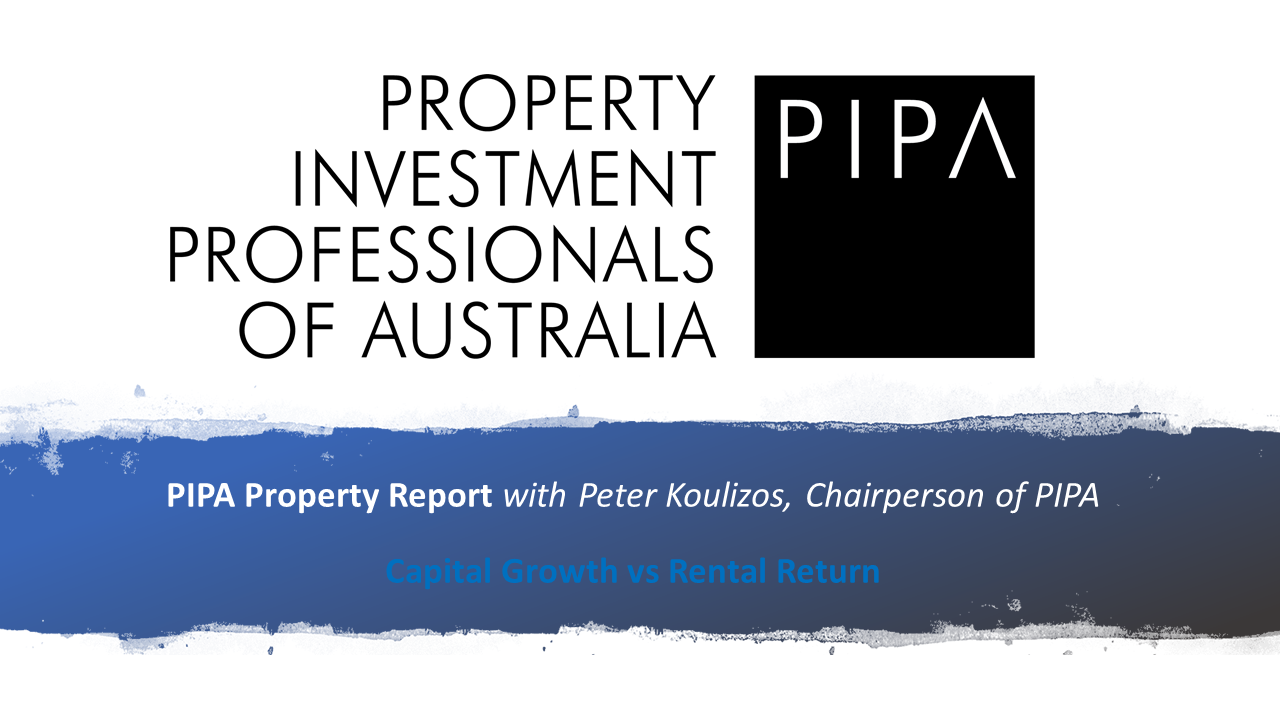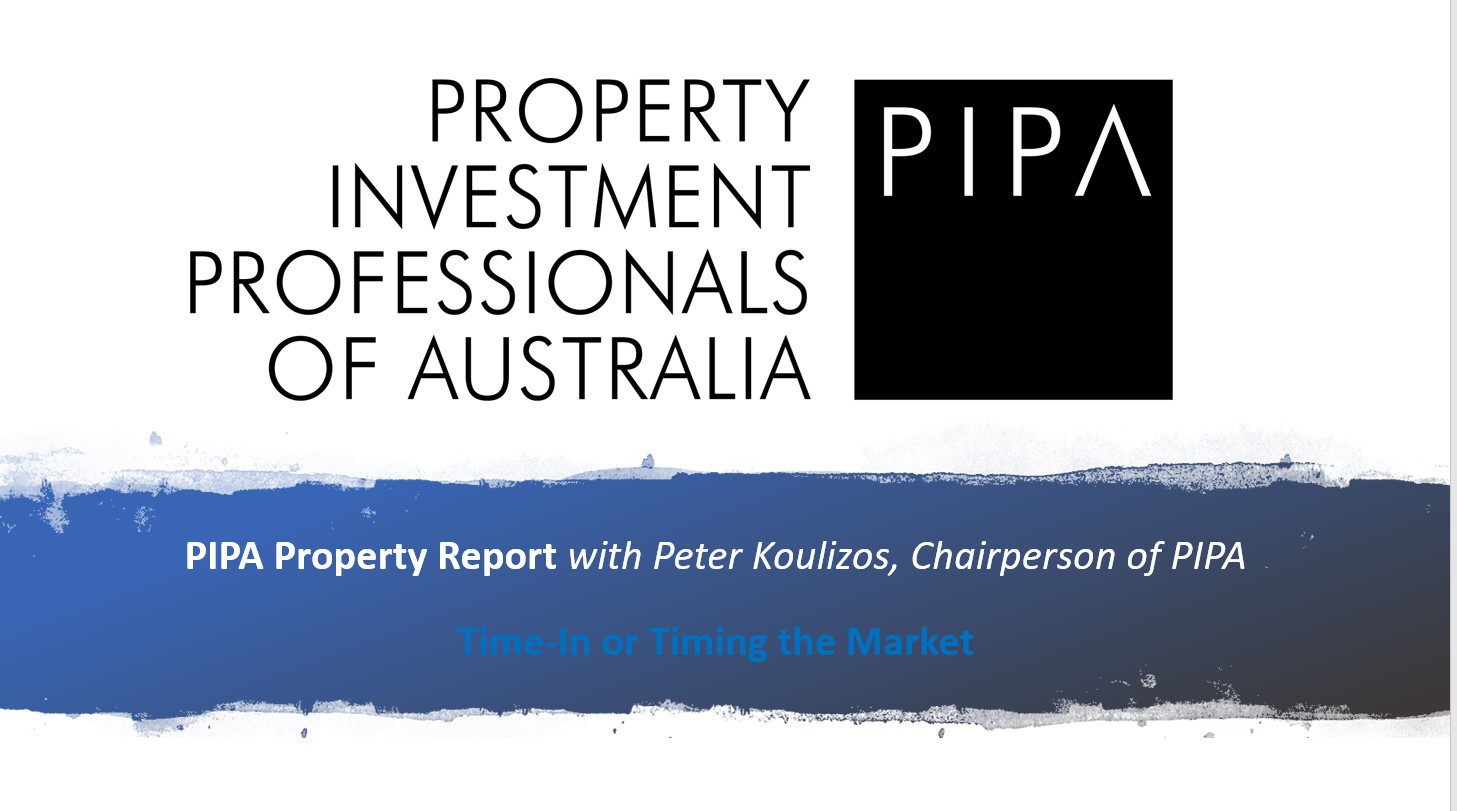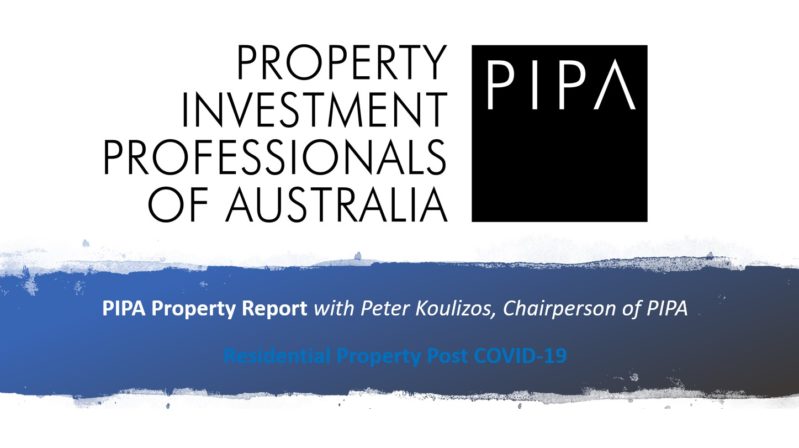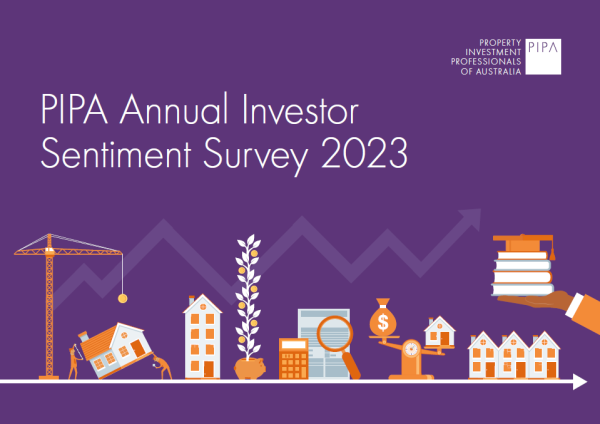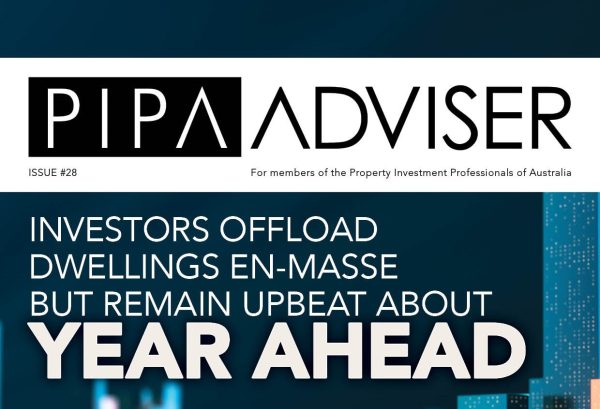PIPA Property Report – Residential vs Commercial Property
Dec 2020Karen Millers
Categories
Location ReportsMedia releasesNational market updatesPersonal advisersPIPA AdviserPIPA Annual Investor Sentiment SurveysPIPA Member ProfilesPIPA video updatesPIPA webinarsPodcastsProperty advisersProperty newsLatest Articles
‘More chance of winning lotto’ than housing targets being met
PIPA Member Profile | Amanda Turner, Opulence Property
In this special monthly video update, PIPA Chairperson, Peter Koulizos discusses the major differences and similarities between residential property and commercial property.
Transcript
Welcome, everyone. My name is Peter Koulizos, the chairperson of the Property Investment Professionals of Australia, otherwise known as PIPA. This is our next video update in the series. Our video updates are not exclusively for PIPA members just to educate our members on all matters property, but it’s also for consumers. Because we would dearly love to have better educated and informed consumers of property, mainly to avoid being ripped off by property spruikers, but also, so you can make better decisions when it comes to buying property. Today’s video update is on commercial property and the differences between residential and commercial property. Most property investors tend to buy residential property for a number of reasons, and I’ll go through those today, but there’s also the opportunity to purchase and invest in commercial property. So, the purpose of today’s video is to outline some of the major differences and some of the similarities between residential and commercial property.
So, let me share my screen here. Okay. So residential versus commercial property. So firstly, we’re looking at returns. Residential property investment is relatively low risk and as a consequence, low return, because when we come to investment, risk is very closely related to return. Commercial property has a higher return, but this comes at a higher risk. For example, if I keep it simple, a flat or unit will average a return around 4 or 5%. Where industrial property such as a warehouse may average around 8%, 9%, if it’s in a regional area, maybe even more. When we look at risk, the higher risk comes in the form of higher vacancy rates. So, if we use that warehouse example again, it can take a while to find a new tenant for the warehouse, could take months, possibly a year on, conversely finding a new tenant for your residential property might only take a few days or a couple of weeks.
So, your residential property is vacant for less time on average, compared to a commercial property. Additionally, if the sole tenant of your property, of your commercial property, whether it’s office, whether it’s retail, whether it’s industrial, has to close due to tough economic conditions, you could face some hard times, like right now, what we’re facing with COVID-19 for example, with office property, a lot more people are working from home, even if it’s only for part of the week, therefore bosses considering leasing less commercial space, because there are less people in the office. So, if you’re an investor or the landlord, this is going to be an issue for you because there is less demand for your office property. Whereas on the other hand, residential property whether times are good, or times are bad, everybody still needs a place to live. So, what we’ve had most recently with COVID-19 is property prices are going up.
Rents are actually going up, even though we’ve had our first recession in almost 30 years. So, just to summarize again there, the risk and the return, the higher risk comes in the form of higher vacancy rates. Leases, residential leases are generally for 12 months, sometimes only six months. Sometimes you can make them periodic, which means you have a start date, but no end date. However, commercial property leases are generally for a much longer period of time. It’s not uncommon to have leases that are on an initial five-year period with an option to renew for another five years. So, if I could just explain that, often a residential tenant will move in and sign a 12-month lease. And if they want to stay on again and the landlord is happy for them to stay on, they’ll sign another 12-month lease.
But commercial property, because they’re often leasing large amounts of space, it can be very expensive to move, and they want to establish themselves, not just for a year or two, but for a long period of time. Often when a business owner signs a commercial lease, they want to be there for a number of years, so they might sign up as I said before for five years, but they want the option to stay on for another five. Now the option is theirs, if they choose to take it, that’s great. If they choose not to take it, then they move out. So, for some businesses like say supermarkets, or service stations, they might take leases of 10 years or even more. So, one of the good things about commercial property is in theory or down on paper you have a tenant for a number of years, whereas in residential property probably year by year.
Now, the quality of the tenant is very important, whether it’s residential property, or commercial property because they’re going to give you basically less hassles. They are going to pay their rent on time, et cetera. So, the tenant is obviously a crucial part of your property investment, because without a tenant you’re not going to get any rent. Now, in commercial property, the best sort of tenant to get are a government organization, or a government department like say a Centrelink renting out your property, or a large corporate tenant. These two are considered to be blue-chip tenants. They are likely to stay there for a long time. They might be able to bargain for a slightly lower rent, but remember you’re not going to have all of those vacancies. So, often a landlord is happy to take a slightly lower rent from a big blue-chip tenant like that, knowing that they’re going to be there for a very, very long time. And they are unlikely to default on the rent. Now one of the disadvantages of commercial property is the high cost of entry, because generally commercial property is much more expensive than residential property.
Now with residential property, you can often buy in our major capital cities, even small flats, or units for 200,000, 300,000, 400,000, but commercial property, especially standalone commercial property, Torrens title freehold, not Strata title property, we’re talking several hundred thousand dollars, if not millions. CBD office or retail space is generally the most expensive space due to its location. Industrial property on the outskirts of the city can also be expensive due to the size of the property being purchased. Cost however can be minimized by purchasing smaller Strata title premises. So you might see, for example, a strip block of shops on a main road, there might be a half a dozen of them. They can often be on a Strata title. You don’t have to buy all six shops. You just might buy one or two in that particular Strata group and that will certainly help minimize your cost of entry.
Next one, maintenance costs. Upgrading a residential property is relatively cheap, paint job, new floor coverings, possibly a new kitchen, which you can get from Ikea or from a kit. And a bathroom can cost as little as say $20,000. But refurbishing a commercial building can be very, very costly. New air conditioning unlike saying a residential property might only cost you $1,500, $2 000 for a split system. New air conditioning can often cost tens of thousands of dollars in a large commercial property. Upgrading the building to meet new health and safety standards. So, because legislation changes, new rules come in, that can be very costly and refits may cost tens or even hundreds of thousands of dollars. However, it’s not the landlord that has to bear all the costs. So, if you’re doing that simple renovation in the residential property, paint job, floor coverings, kitchen, bathroom, it’s the landlord that’s going to pay for that. You can’t expect the tenant to do that.
But in commercial property, you can put the onus on the tenant to do that, but then they’re going to want something in return. So, if the tenant is going to pay $50,000 or a $100 000 to refit for their purposes, then they might say, we’ll do that but we want a reduction in rent for the first year, or we want six months rent-free, or whatever the case may be. So there needs to be a bit of give and take. And there certainly needs to be a fair bit of give and take in these current COVID-19 times, because what we are finding is many landlords of office property are going to be hurting with more and more work from home. So landlords or investors in traditional office property might need to think outside the square, such as co-working space, converting it to co-working space, which is a little bit like serviced offices, but there are some differences. Retail property has been taking a hit really from the global financial crisis, because online retail has really taken over.
So, you need to be very careful. Okay. So, let me stop sharing as we’re coming to the end of our video update. So there it is, I know it’s only a very basic outline, but the keys to remember there are, residential property, relatively low risk, low return. Commercial property, relatively higher risk, higher return. And the risk is in the vacancy rate, you can expect to get a tenant in your residential property within days or a week or two. Even if you have to drop the rent by five or 10 bucks a week, it’s not going to that long. But when it comes to commercial property, you can be without tenants for weeks, months, or well over a year. But in the meantime, you’ve still got to pay the mortgage.
So look, I’m not trying to put people off by not buying commercial property. I’m just making people aware of some of the similarities and some of the differences. Commercial property can be great for cash flow, not so much for capital growth. And let me demonstrate that very clearly with some research that has been done by one of my colleagues at the University of South Australia, Peter Rossini. So, let me just share my screen again. So just have a look at this. Let me just, all right. So what we have here is these colored lines, capital city, residential property prices from the year 2000 to last year, and this is an index. So, they all start at 100. Doesn’t mean that all the properties in the capital cities were worth a $100 000 in the year 2000. It’s just an index in very simple terms if it goes from 100 to 200 they’ve gathered across.
So, let’s have a look at it in turns, so Sydney is this dark blue line, it went from 100 to 320. So, that has increased in value markedly. Melbourne, the red line, well over, it’s probably close to 450. Brisbane, the black line, Adelaide the green line, Perth, the light blue line down here, Hobart the orange line, looking at this graph, it’s been the best performer in that 20 year period. Darwin, this green line, it’s been the worst performer, but still increased. So, even if we look at Darwin, which sits at about 260, that’s more than doubled in price from 100. Because 100 to 200 is doubling. So it’s more than doubled, which is pretty good. Obviously these capital cities here, Hobart and Melbourne have done particularly well. And then we have Canberra sitting in the middle. I’m not going to talk about the stock market, but this dotted line is the Standard & Poor’s ASX 200.
What I’m looking at is the Standard & Poor’s A-REIT, which stands for Australian Real Estate Investment Trust. Now, Real Estate Investment Trust is basically an organization that buys a large commercial building or has a number of commercial buildings in that trust. And so they buy them so that people can get the rent. So, one of the great things about commercial property, as I said earlier, is the rental income. There is no doubt that commercial property can give you a great rental income, not so great with capital growth. Let’s have a look at this, in the 20 years, commercial property went from 100 to 120. All right, it increased 20%, but over 20 years compounding, that’s less than 1% per year, but you look at the performance of residential property. So, there’s another lesson there. So, generally … let me stop sharing again, residential property great for capital growth. Rental return, depends, houses might return 3%, flats and units 4 or 5%. In some blue-chip areas you’ll get a lower return.
In some areas on the outskirts of the city or regional, you’ll get a higher return from residential property, whereas commercial property, if you’re in the city center, if you’re in the Sydney City Center and it’s an office building, you might only get 5%. If it’s some industrial property on the outskirts of a regional area, you might get 10 or 11% return on your money. So, the returns on paper look fantastic. But as I demonstrated with the last graph of how commercial property, as reflected with Australian Real Estate Investment Trust, like in turn, don’t really grow much in value. So, thank you very much for your time. And thank you for taking the time to watch this update. Please visit the PIPA website, pipa.asn.au for other video updates. And remember, if you are looking for quality and qualified property investment advice, please, please go to a qualified property investment advisor, otherwise known as a QPIA.
I mentioned property spruikers before, at the beginning of the video, there are far too many of them around because unfortunately, property investment advice is not regulated. Unlike financial advice. So, the least you can do is try and cover yourself rather than going to any Tom, Dick, or Harry for property investment advice. Look for somebody that is a PIPA member and they might be an accountant, they might be a mortgage broker. Many people in the property industry can be PIPA members, but if you’re looking for property investment advice, look for a qualified property investment advisor. That website again pipa.asn.au. And bye for now.
